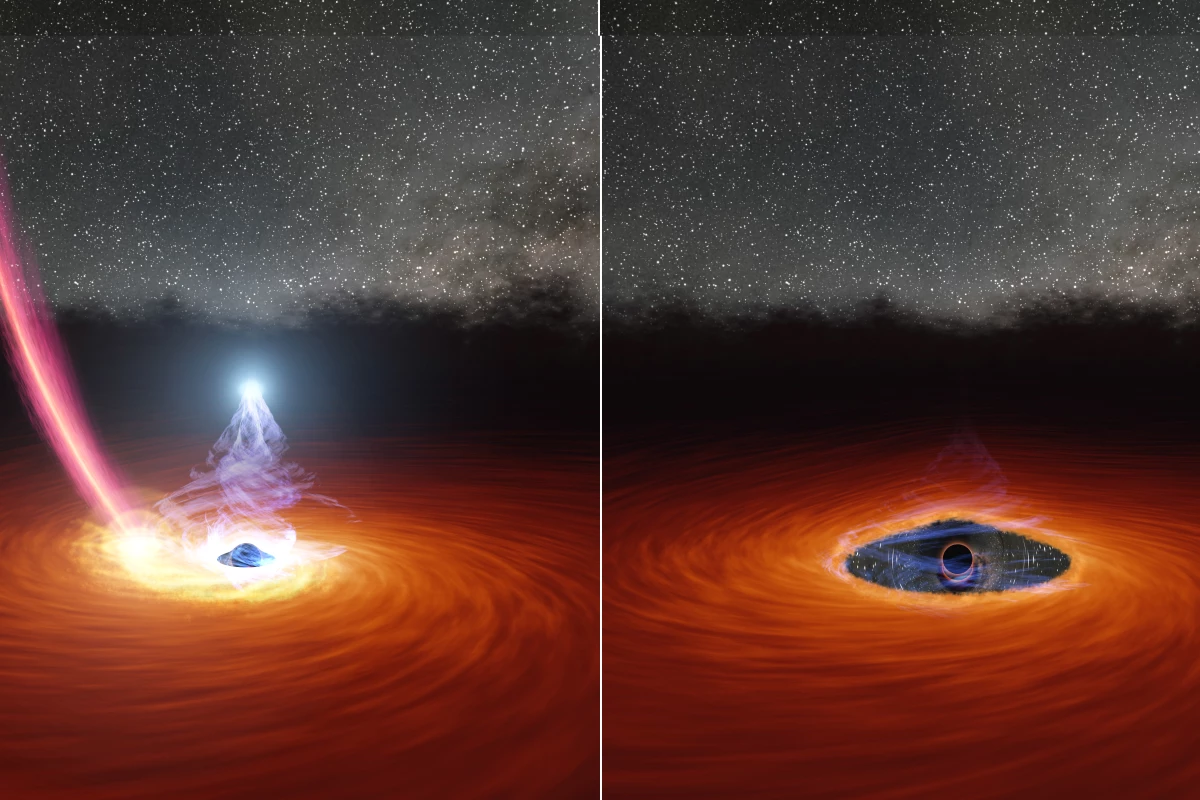Despite the name, black holes often shine very bright in the sky. That’s due to a hot, glowing ring of dust and gas that surrounds them, called the corona. Now, astronomers have been puzzled to witness a black hole’s corona suddenly vanish – and as if that wasn’t weird enough, it reappeared a few months later.
This black hole is a supermassive monster, located at the center of a galaxy some 100 million light-years away. And it’s particularly ravenous, belonging to a class called Active Galactic Nuclei (AGN) which appear to glow brightly as they constantly chow down on material swirling into them.
The story started in March 2018, when a run-of-the-mill AGN designated 1ES 1927+654 suddenly flared up, shining 40 times brighter than usual. The All-Sky Automated Survey for Super-Novae (ASSASN) spotted the flash, which alerted astronomers to point other telescopes towards the object.
While observing the AGN in X-ray, optical and ultraviolet light, scientists watched in surprise as the light faded, its brightness dropping by a factor of 10,000 until it was no longer detectable at all. Scientists have never seen a burnout that drastic happen so quickly.
“We expect that luminosity changes this big should vary on timescales of many thousands to millions of years,” says Erin Kara, co-author of the study. “But in this object, we saw it change by 10,000 over a year, and it even changed by a factor of 100 in eight hours, which is just totally unheard of and really mind-boggling.”
But that wasn’t the end. Within a few months the light had been rekindled, firing back up almost to its original luminosity, which has also never been seen before.
So what exactly happened? The astronomers believe that the black hole’s corona, which is the source of the light, was seriously disrupted, perhaps even destroyed. That explains both the dip and return of the light, as the disk could have later righted itself and resumed being consumed by the black hole.
Even if that’s the case, what kind of calamity could have caused such destruction? One hypothesis that the team put forward was that a star wandered too close, only to be torn apart by the black hole. The initial flare could have been caused by the star’s destruction, and the intense gravity of the event could have dislodged material from the corona to fall into the black hole. Then over time, more of it built up and eventually fed the AGN, allowing it to brighten once again.
“This seems to be the first time we’ve ever seen a corona first of all disappear, but then also rebuild itself, and we’re watching this in real-time,” says Kara. “This will be really important to understanding how a black hole’s corona is heated and powered in the first place.”
The team continues to keep an eye on the object, just in case it goes and does something else that isn’t normally considered possible.
The research was published in the Astrophysical Journal Letters.
Source: MIT




